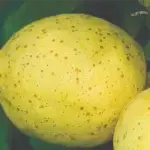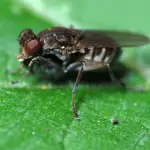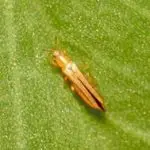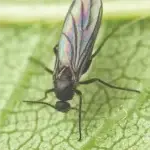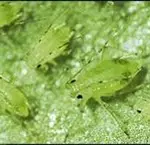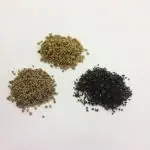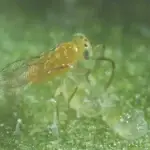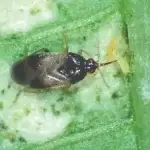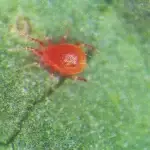Flowers and Ornamentals
Overview
The Australian flower and ornamentals industry has experienced turbulent times in the past due to cheap imports, difficult growing conditions, and severe pest problems in specific situations. The industry recovered during the COVID pandemic and the outlook still remains positive.
Key pests in ornamentals and cut flowers tend to be Two-Spotted Mite, Western Flower Thrips, Greenhouse Whitefly, and various types of aphids, Fungus Gnats, and Shore Flies.
Controlling pests in ornamentals and cut flowers can pose many problems to growers and nurseries. In the case of most ornamentals, such as nursery stock, the whole plant is being sold and the tolerance for any sign of damage or pests at sale is very low.
Given the sheer scale and complexity of the flower and ornamental industry, we have highlighted some of the most common pest problems on this page. You can also take a look at our nursery page and pest section.
Signs you have Flowers and Ornamentals pests
Given the diversity of crops and growing conditions indoors and outdoors, pest damage manifests in different forms among flowers and ornamentals.
The key to controlling pests in your crop is detecting them early and introducing beneficials at the right moment. Here are some of the main signs of pests you are likely to see.
- Aphids. Honeydew and sooty mould indicate aphid hotspots. You will often see aphid skin moults, live aphids in the growing tips, on the undersides of leaves and on the roots in some cases. Aphids can potentially transmit viruses to the host plant.
- Caterpillars. Chewing damage and fresh droppings indicate that you have caterpillar activity.
- Eriophyid or Tarsonemid Mites (eg, Blister Mites, Rust Mites, Broad Mite or Cyclamen Mite). These mites are not visible to the naked eye however distorted/discoloured leaves and stunted plants (due to damaged growing tips) are signs these mites are present.
- Fungus Gnat or Shoreflies. These are easy to detect as high numbers can be caught on sticky traps. Inspect the roots of younger plants for larvae activity if the vigour of your plants is poor. The flies tend to leave their droppings on the leaves and flowers.
- Scale insects. Mature scales are easy to see but are often detected too late. High infestations damage the plant via honeydew secretions, the resulting sooty mould, and generally weakened plants.
- Slugs and Snails. Slimy silver trails on plants and soil/floors indicate slug and snail activity. The damage to plants tends to be worst where growing conditions are wet, dark and humid.
- Spider Mites. Damage appears as white/yellow spots, speckling or streaks and eventually, severe leaf scarring/stunting and/or webbing. Spider Mites can also transmit viruses, eg, false spider mites transmit the Orchid Fleck Virus to specific orchids.
- Leafhoppers. These are easy to see when you disturb the plant. Leafhopper feeding damage looks like white scratches on the leaves. They are sometimes confused with whiteflies.
- Thrips. Thrips can damage all parts of the plant. Damaged flowers have spots or streaks without colour and leaf damage can range from spots or streaks to severe stunting, curling and discolouring. Thrips can potentially transmit viruses to the host plant.
- Whiteflies. Whitefly adults are easy to detect when you disturb the plant. Whitefly scales secrete honeydew and this encourages sooty mould to develop, which makes the plants unsaleable. Whiteflies can potentially transmit viruses to the host plant.
Products you can use to control Flowers and Ornamentals pests
The key to effective pest control in flowers and ornamentals is regular scouting and introducing the beneficials at the right moment.
We recommend you discuss your situation with your local Biological Services Consultant because there is a complex range of variables that will affect which of the products below you can use to control pests in your flowers or ornamental crops.
You can also use sticky traps and rolls to monitor and mass-trap Fungus Gnat, Shoreflies, whiteflies, winged aphids and thrips.
The leaf structure of many ornamental and flower crops and/or lack of an adequate pollen source is not suitable for ongoing reproduction of some beneficials. In these cases, we recommend you use predatory mite sachets, banker plants and trap plants to help beneficials establish and reproduce in your crop.
Other tips for managing pests in your Flowers and Ornamentals
If possible, we recommend you group plant varieties susceptible to certain pests together, rather than having them spread through your nursery. This makes them easier for you to monitor and treat similarly.
If you are introducing an IPM program, we recommend you do so when new plant material is first propagated and preferably when a whole greenhouse can be emptied at one time. This decreases the chance of chemical residues on plants before you introduce beneficials. It also reduces cross-contamination of pests from an older crop to a new crop. If you source plant material from a propagation nursery, it is very important to know exactly which chemicals have been used on those plants and when, before you introduce beneficials.
Your local Biological Services Consultant can provide year-round, professional crop monitoring and expert IPM program advice.
Get tailored advice for your commercial crop
To speak with one of our qualified consultants about your current commercial crop challenge or to learn about the benefits of the IPM maintenance and monitoring services we provide, contact us.







